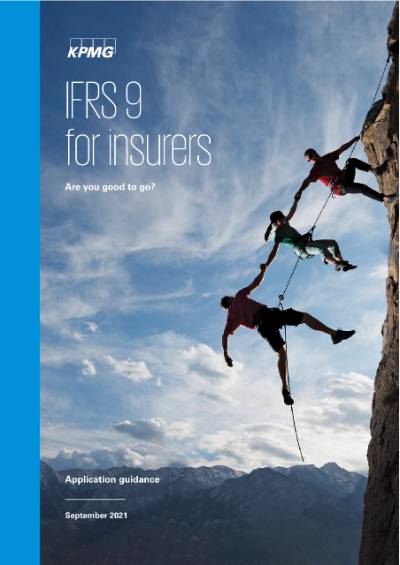Many insurers have used the temporary exemption from applying IFRS 9 Financial Instruments and have instead continued to apply the predecessor standard IAS 39 Financial Instruments: Recognition and Measurement. However, this exemption will no longer apply when IFRS 17 Insurance Contracts becomes effective – i.e. for annual periods beginning on or after 1 January 2023 – and that time is approaching fast.
How insurers might be affected
IFRS 9 will have a wide-ranging impact on how insurers account for financial instruments.
Scope requirements
IFRS 9 largely carries forward the scope requirements and exceptions of IAS 39. However, there are some changes – including consequential changes that are effective when IFRS 17 is adopted – that need to be considered.
Classification and measurement
IFRS 9 introduces new classification and measurement requirements, particularly for financial assets. Insurers may need to perform new analyses and make new judgements – e.g. to determine whether financial investments are measured at amortised cost or fair value and whether gains and losses are included in profit or loss or other comprehensive income. They will also need to consider the interaction between their accounting for financial investments under IFRS 9 and for insurance contracts under IFRS 17 to minimise accounting mismatches.
Impairment
The new impairment model under IFRS 9 is based on expected credit losses and is significantly different from the IAS 39 incurred loss model. All financial assets in the scope of the impairment model will generally carry a loss allowance. Under the new model, insurers will probably have larger and more volatile provisions for impairment losses.
Hedging
Insurers will have a choice to apply the new general hedge accounting model under IFRS 9 immediately or to defer its application and continue with IAS 39’s hedging requirements. Some insurers will be looking at whether there is an opportunity to expand their use of hedge accounting to better reflect the results of risk management activities considering the new accounting requirements for financial instruments and insurance contracts.
Presentation and disclosure
IFRS 9 adds substantial new disclosure requirements about financial instruments, particularly relating to credit risk and hedge accounting.
Presentation of comparative information
IFRS 9 does not generally require a company to restate comparative information when IFRS 9 is initially applied and does not allow restatement for financial instruments derecognised before the date of initial application. Because comparative information for insurance contracts has to be restated under IFRS 17, this may give rise to accounting mismatches. The International Accounting Standards Board (the Board) has proposed a new classification overlay option for financial assets to alleviate the challenges associated with these differing transition requirements. Insurers presenting comparative information for financial instruments will need to perform their own analyses to determine what approach works best for them and their stakeholders, based on their own facts and circumstances and considering any amendment resulting from the Board’s proposals.
Read our practical guidance
Our publication IFRS 9 for Insurers – Are you good to go? (PDF 1.8 MB) considers some of the key accounting issues that insurers need to focus on to get to the finish line. It offers practical examples, analysis and insight on the scope requirements; classification and measurement; impairment; hedging; transition; and presentation and disclosure under IFRS 9.
© 2024 KPMG IFRG Limited, a UK company, limited by guarantee. All rights reserved.


